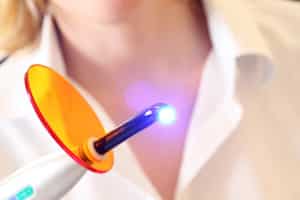 In one of those ironic twists of scientific history, lasers were created before anyone had quite figured out how to use them. However, after the first recorded use of laser technology in 1960, scientists from many fields were discovering new ways to use these concentrated beams of intense light energy. It wasn’t too long before the medical field and eventually, the dental field, began using them as adjuncts to certain procedures. Your family dentist may even use laser dentistry to treat a number of commonplace oral health problems.
In one of those ironic twists of scientific history, lasers were created before anyone had quite figured out how to use them. However, after the first recorded use of laser technology in 1960, scientists from many fields were discovering new ways to use these concentrated beams of intense light energy. It wasn’t too long before the medical field and eventually, the dental field, began using them as adjuncts to certain procedures. Your family dentist may even use laser dentistry to treat a number of commonplace oral health problems.
1. Treat Gum Disease
Gum disease (also commonly known as periodontal disease) refers to a condition in which oral bacteria infect the gum tissue, leading to inflammation. If left untreated, gum disease can lead to tooth loss and can increase the risk of a range of health problems. Dental lasers are often used in the treatment of gum disease to remove infected tissue and stimulate the growth of new gum tissue cells.
2. Even Out the Gum Line
A gummy smile is defined as one in which more than 3-5mm of gum tissue is visible when smiling. Too much gum tissue can make the teeth look short, resulting in a smile that looks awkward. Dental lasers are the preferred tool of choice when performing a gingivectomy, a procedure that reduces excess gum tissue and evens out the gum line for a more attractive smile.
3. Placing Dental Restorations
When placing a dental restoration, such as a filling or porcelain veneer, the dentist must remove small areas of tooth enamel to ensure the best possible fit. Conventional methods for removing enamel require drills and files, which can create micro-cracks in the teeth. However, dental lasers can be used to prepare a tooth for receiving a restoration without the risk of causing damage micro-cracks and often without the need for a local anesthetic.








